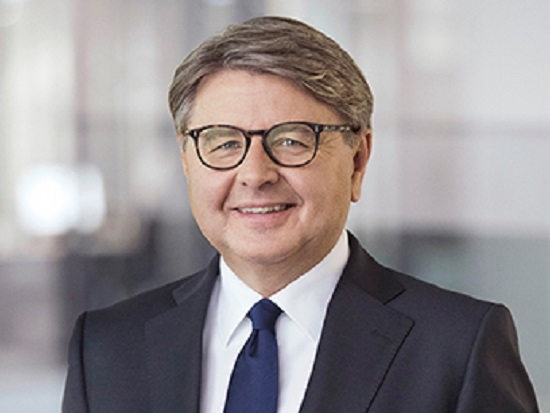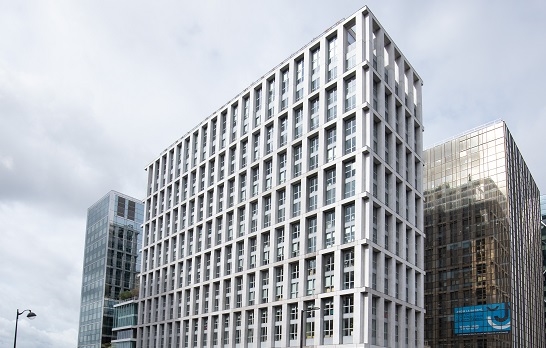FOWi talks to…SGX’s Michael Syn
Located in one of globe’s most lucrative financial regions, SGX has emerged as one of the world’s fastest growing derivative exchanges in 2013.
According to FOWi data, the bourse reached a record Q1 eclipsing the previous year’s volumes by 46%.
Since the start of the year, Singapore Exchange (SGX) has noticeably been focusing on a series of product launches, collaborations and investments in order to maintain the high levels of growth it experienced in 2012.
SGX’s head of derivatives, Michael Syn, talks to FOWi’s Jonathan Watkins about this rapid growth, the challenge of attracting international investors and plans for further expansion.
FOWi: SGX has recently signed a number of new agreements with other exchanges based in Asia – including with KRX, PSE, CFFE. How do these partnerships fit in with its overall strategy?
MS: Singapore is a fairly small country. SGX, and Singapore for that matter, has not ever had the privilege of a large domestic market to insulate it from global competition.
More than any other Asian exchange, we have always had to fight for global relevance by being highly attuned our customers’ needs and providing products which meet their needs.
Most importantly, we address those needs by delivering year-after-year on their expectations of efficiency, responsiveness and high risk-management standards which are fit for purpose for institutional-grade investors.
Collaboration with Asian exchanges is a win-win for SGX and its Asian partners, because our Asian Gateway is a proven venue for Western clients to risk-manage exposure to Asia.
Our peer exchanges in Asia wish to benefit from our willingness to bring global clients to their doorstep, possibly also benefiting from our long-term investment in international regulatory passports.
Increasingly, many global traders and investors are also choosing to headquarter themselves physically in Singapore, which is Asia's leading wealth management and corporate treasury hub.
FOWi: SGX’s CEO, Magnus Böcker, recently said consolidation is less of an important development for Asian exchanges than their western counterparts. What are the key opportunities for developing the exchange beyond taking the merger and acquisition route?
MS: The harmonisation of capital markets and regulatory regimes has had a very different history in Asia compared to US and Europe.
Capital barriers in particular lead to differing domestic settlement currencies.
This means there is much stronger strategic value in collaboration between Asian exchanges compared to more fragmented western markets.
In Europe, M&A activity is driven primarily by consolidation and cost efficiencies, rather than necessarily a growth of market imperative.
Asian markets are also younger in their evolutionary history compared to Western markets.
The industry in Asia generally expects a different, and more positive, outlook which therefore prefers a win-win growth agenda rather than a consolidation agenda.
FOWi: Looking at our FOWi data, March's activity represents the highest volumes in the history of SGX. Why do you think was the case?
MS: While volume growth was creditable for SGX last year, what was perhaps even more interesting was open-interest growth of over 100%.
Supported by direct feedback from SGX clients, this is a strong validation of two drivers of the growth.
Firstly, an elevated need to hedge more dynamically exposure to Asian market risk factors, which tend to be equity index linked and commodity linked.
Asian equity and commodity factors tend to have highest exposure in global portfolios, and also the highest volatility.
Secondly, we are noticing a "flight to quality" to a reliable and creditworthy clearinghouse.
Clients view SGX, and Singapore for that matter, as a clearinghouse anchored in a neutral offshore/globalised jurisdiction.
We have neither a heavy axe in being producer nor consumer, and they put some weight in the fact that Singapore is Asia's only AAA-rated jurisdiction.
FOWi: In what products are you seeing the most growth?
MS: We saw the strongest growth in Asian industrial commodities, such as Iron Ore, which is the primary input into steel manufacture.
This is pretty much the backbone of Asia's industrialisation. Also Rubber, which is a key industrial commodity in transport.
Very strong growth was also seen in equity indices for China, India and Indonesia, which are unique for SGX in being the only liquid offshore futures markets in the world.
And strong growth was also seen in Japanese structured product hedging, which drove activity in Nikkei options and Nikkei dividend futures on SGX.
FOWi : Is the exchange's growth in volumes concentrated mostly in Asia or are you seeing increasing participation from US and Europe?
MS: For the period in question there was growth in participation across all markets, but we did notice pronounced interest from US/European clients.
This is possibly due to the increased distribution from our trading hubs located in London and Chicago.
But it may also have been due to the comfort and familiarity in the international regulatory recognition and passport that SGX has established.
Through a long operating history in Western markets, we are possibly the most west-friendly of the Asian exchanges.
FOWi: Finally, how do you think the launch of Asian foreign exchange futures will impact volumes at the end of this year and into 2014?
MS: Asian foreign exchange markets are also relatively young in their evolutionary history compared to harmonised Western markets.
Remember that capital management policies are far more important to many Asian economies particularly after the Asian financial crisis almost two decades ago.
They are still largely trade rather than consumer-driven.
All of Asia needs to manage their foreign exchange exposure (a) between onshore and offshore counterparties and (b) in the forward currency markets rather than the spot currency markets.
In conjunction with the G20 commitments to bring these bilateral forward transactions from the OTC space into the centrally cleared space, it is a logically adjacent offering for SGX to offer Asian foreign exchange futures to meet the client needs identified in (a) and (b).
In fact, the launch of these futures is driven very much by client requests, as they already use SGX futures to manage their equity risk premium in China, India, Japan, Taiwan, Singapore and Indonesia, with Thailand and Philippines also announced.
They naturally look to also manage their currency risk premium on the same venue for both execution and for clearing, especially with natural portfolio offsets and margin efficiencies achieved by clearing these pan-Asia risk exposures with SGX's clearinghouse.
New contracts typically take a few years to get to a tipping point of liquidity, and our FX futures will be no different.
However, the tailwinds behind these contracts lead us to believe that they will find good traction with our client base.
We are hopeful that they may even bring new clients to the table for SGX.
The publishers of FOW Intelligence would like to remind all recipients that they are legally bound by a licence agreement expressly prohibiting the onward transmission of FOWi content except with our prior written consent. Legal action may be taken against any subscriber company whose staff fails to comply with the terms of this agreement.
Found this useful?
Take a complimentary trial of the FOW Marketing Intelligence Platform – the comprehensive source of news and analysis across the buy- and sell- side.
Gain access to:
- A single source of in-depth news, insight and analysis across Asset Management, Securities Finance, Custody, Fund Services and Derivatives
- Our interactive database, optimized to enable you to summarise data and build graphs outlining market activity
- Exclusive whitepapers, supplements and industry analysis curated and published by Futures & Options World
- Breaking news, daily and weekly alerts on the markets most relevant to you




